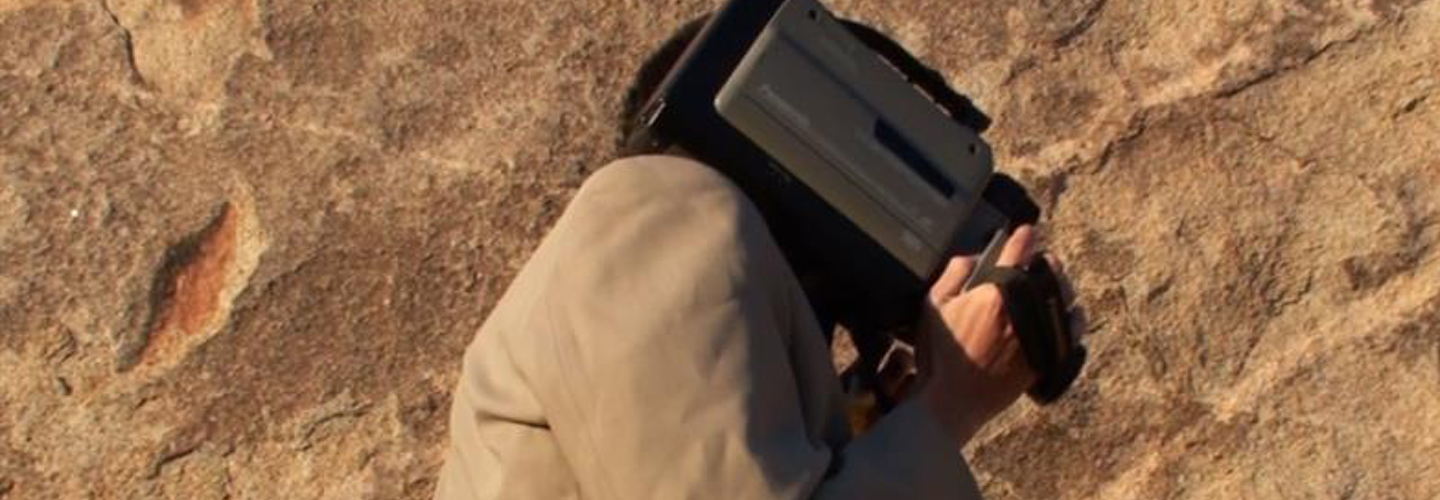Event Details
Date & Time:
Thu November 5, 2020 - Fri November 6, 2020
7 PM
Location:
The Block Museum of Art
40 Arts Circle Drive
Evanston, IL 60208
Audience:
Open to the public
Details:
What does it mean to come from somewhere? - Films by Fox Maxy
(2018-2020, USA, digital, approx 70 min)
This program of short films by the California-based artist Fox Maxy (Ipai Kumeyaay and Payómkawichum) offers a prismatic and timely vision of the artist’s home state, viewed through the lens of Indigenous identity and culture. Drawing on the visual language of Instagram and the associative logic of experimental montage, Maxy imagines strategies of knowing and caring for the land–and for resisting the forces of colonialism and extraction that threaten it. Recent works like SAN DIEGO (2020) explicitly address the impacts of COVID-19 on Native communities, asking how social media can play a role in maintaining bonds threatened by isolation and incursion. Following the screening, Maxy will appear for a discussion of his work, joined by filmmaker, photographer, and University of Chicago postdoctoral fellow in Anthropology Teresa Montoya (Diné).
The films and discussion will be streamed live at 7 pm CDT on 11/5, and will be available for 24 hours afterward through the Block’s Vimeo page. Please RSVP through Eventbrite.
Following the screening, Maxy will appear for a discussion of his work, joined by filmmaker, photographer, and University of Chicago postdoctoral fellow in Anthropology, Teresa Montoya (Diné).
ABOUT THE FILMS:
CALIFORNIA GIRLS (2018, 8 min)
A profile of artist Tiffany Adams (Chemehuevi Indian Tribe of Lake Havasu), whose work centers the experiences of Indigenous women. Reclaiming practices of California Native markmaking, Adams’ work celebrates traditional facial tattoos, the women who bear them with pride, and the sharing of Indigenous knowledge throughout the state.
SAN DIEGO (2020, 30 min)
At once a snapshot and a composite, SAN DIEGO assembles a web of footage from dozens of sources, including archival videos, drone footage, cameraphone recordings, and screen captures, to form a bold and unconventional statement about Indigenous safety in the face of colonialism and pandemic.
MAAT MEANS LAND (2020, 30 min)
The act of filming daily life becomes a radical act of reclamation in this free-roaming California landscape film. Distorted images of border walls, fences, and security guards openly confront the territorial logic of the colonizer, while Maxy’s boundary-defying montage mocks the very notion of delineation between sources, genres, and authorial voices.
Co-presented by The Block Museum of Art with support from the Center for Native American and Indigenous Research at Northwestern University.
LAND ACKNOWLEDGEMENT
Northwestern is a community of learners situated within a network of historical and contemporary relationships with Native American tribes, communities, parents, students, and alumni. It is also in close proximity to an urban Native American community in Chicago and near several tribes in the Midwest. The Northwestern campus sits on the traditional homelands of the people of the Council of Three Fires, the Ojibwe, Potawatomi, and Odawa as well as the Menominee, Miami and Ho-Chunk nations. It was also a site of trade, travel, gathering and healing for more than a dozen other Native tribes and is still home to over 100,000 tribal members in the state of Illinois.
It is within Northwestern's responsibility as an academic institution to disseminate knowledge about Native peoples and the institution's history with them. Consistent with the University's commitment to diversity and inclusion, Northwestern works towards building relationships with Native American communities through academic pursuits, partnerships, historical recognitions, community service and enrollment efforts.
Contact The Block Museum of Art for more information: (847) 491-4000 or email us at block-museum@northwestern.edu
